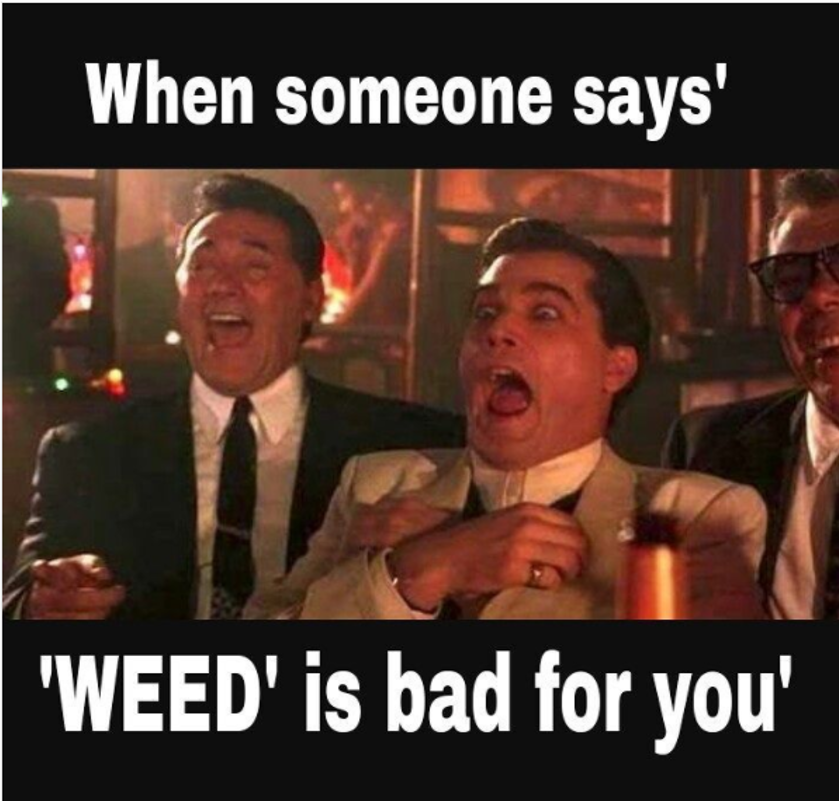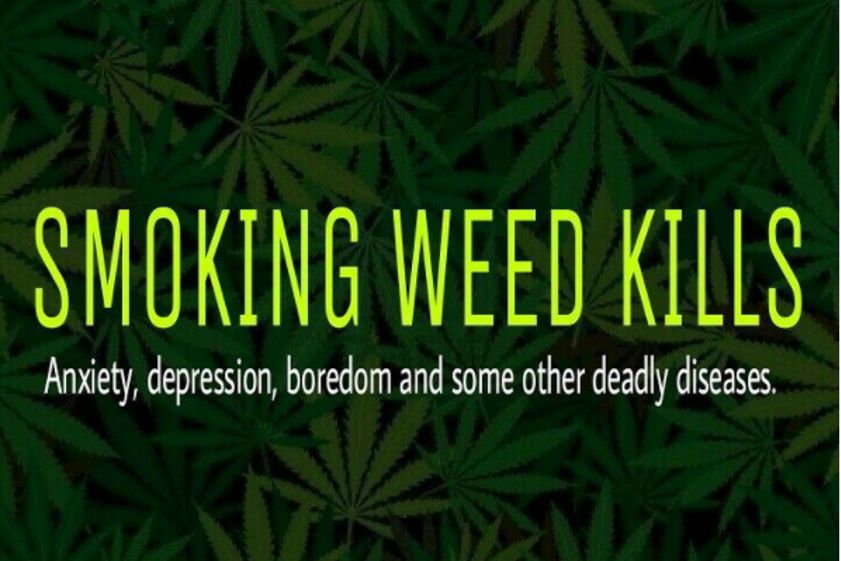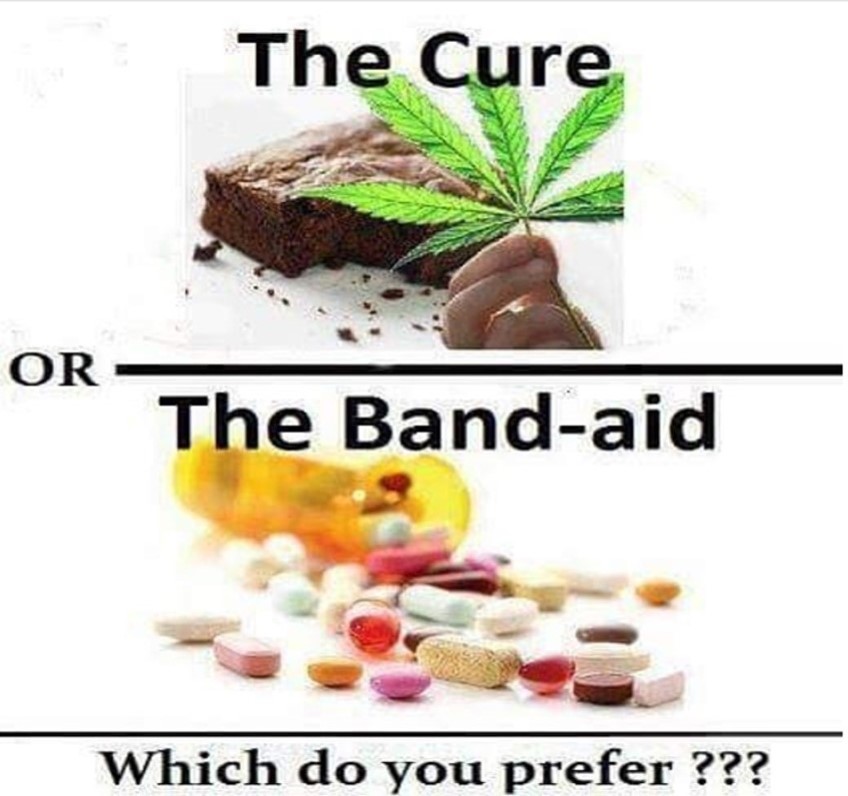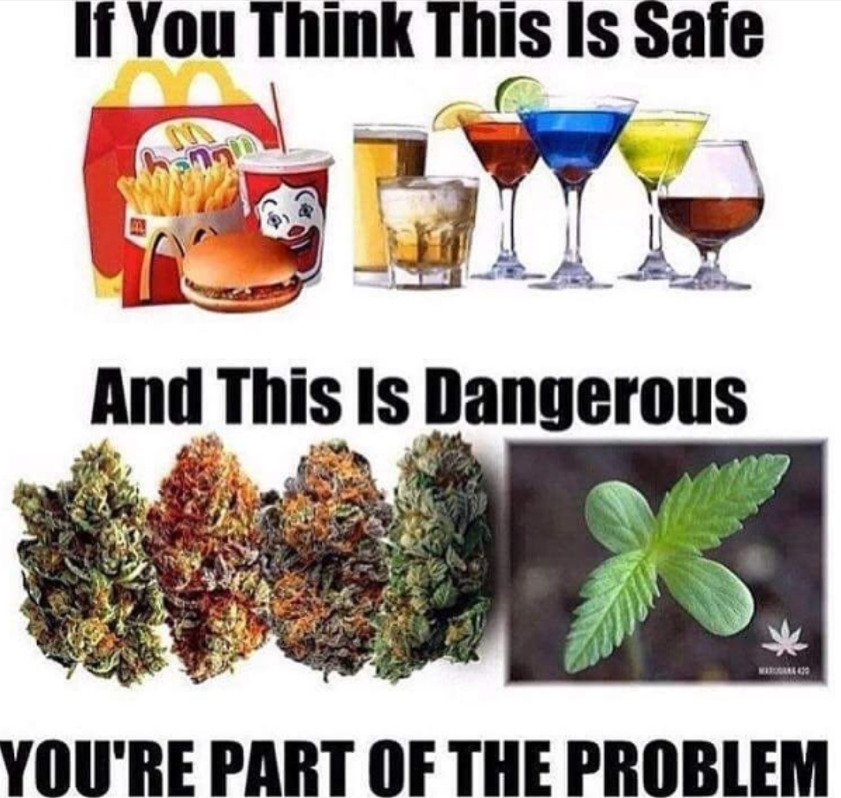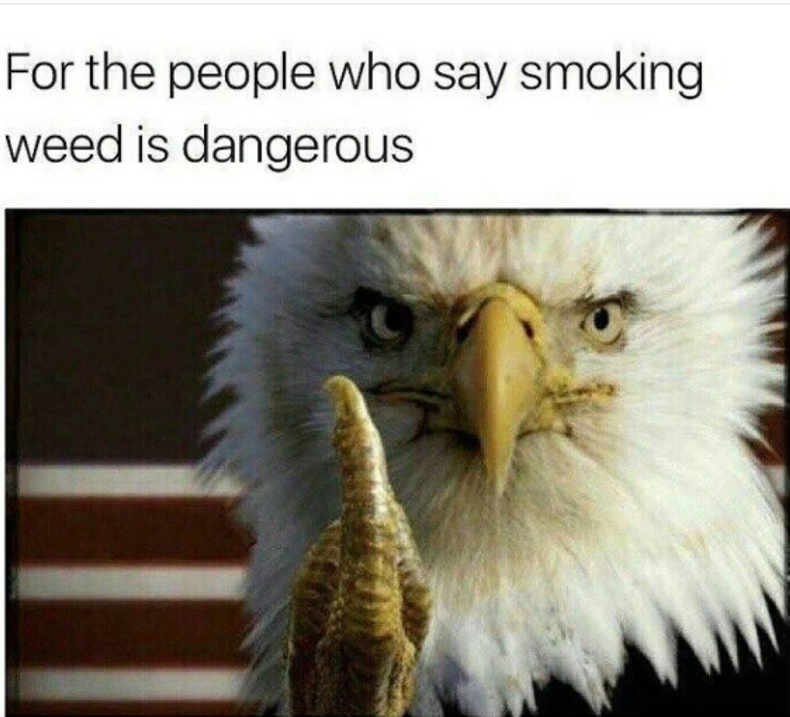The drug education children are receiving in school is severely lacking. So, in the absence of high quality education about drugs, where are young people getting their information from?
Often it is from each other, usually from a friend using the drug in question. This is deeply problematic because not only is there the obvious concern about the accuracy of this information, but it also means you end up with groups of teenagers all using drugs problematically who consistently validate each other’s drug use in order to justify their own. This is a phenomenon often seen by treatment workers trying to help young people who are in denial.
They also get information from the internet of course, which leaves them vulnerable to being influenced by fake news on Facebook and other social media as well as internet memes on sites such as reddit and Instagram, sometimes with damaging messages that sink into the consciousness over time. These memes are usually very simplistic and don’t leave much room for nuance, leading to young people believing, for example, that there are absolutely no harms at all associated with cannabis. There are plenty of memes and pages that state that cannabis cures cancer and that the health risks that the ‘establishment’ talks about are all lies.
These memes promote the idea that weed not only has zero harms, but also the idea that it is some kind of miracle cure for all kinds of disease. That is not to say that there are not therapeutic uses of cannabis – in fact, there is plenty of evidence to suggest there are – but these memes also contain a lot of misinformation and unsubstantiated claims. At the other end of the spectrum is the abstinence-focused drug messaging that young people receive from much of the rest of society. What we really need is a balance between the scaremongering “cannabis is dangerous” and the equally ill-informed “cannabis is harmless” narratives.
Some examples of these misleading memes will be given throughout this article.
There are a considerable number of accurate, useful websites with information about drugs and harm reduction advice, but they are often not being accessed by young people. Some will use Google to find websites such as the NHS website, DrugScience, Bluelight, Tripsit or even Wikipedia and a small number will participate in forums about drugs or refer to scientific research papers on PubMed, books and talks by experts. Erowid is a handy website where people can share their tips and experiences, but the fact anyone can upload means that the advice has to be taken with the pinch of salt. Whilst these websites (Erowid, Bluelight etc) can be very useful, they are used by more of a university crowd and are relatively unknown amongst under 18s.
One contributor said: “The thing about these websites is that unless you’re a real geek about drugs, you probably don’t know about them.” Other websites include drugsand.me, which was founded on the back of survey results from University College London students, indicating that far more people have tried drugs than are aware of good harm reduction websites.
The survey data of 100 UCL students found that 72% had tried a class B drug in the last two years and 39% had tried a class A drug, but only 42% had read up on how to reduce the harmful effects of drugs. Of those who hadn’t, 28% said that they hadn’t because they didn’t know where to look and 6% because the information was too technical. This confirmed what was already suspected – that many young people remain uniformed because of a lack of good resources, or knowledge of those resources. So how can we encourage young people to access quality websites with unbiased drug information? When asked if they would read about how to reduce the harmful effects of drugs if the information was simple and easily accessible, 88% of respondents said they would. This implies a significant demand for a website with scientifically accurate and accessible harm reduction information.
The one website there seems to be widespread knowledge of is Talk To FRANK, a national drug education service established by the government in 2003. It is intended to reduce the use of drugs by educating teenagers about the potential harms. It is the main drug education initiative that the government has invested in. And yet, FRANK has many critics and has even been accused of presenting false and misleading information about drugs intended to scare rather than educate, meaning that many people have no respect for it.
For example, in 2007 an article entitled “Cannabis Explained” had to be taken down after numerous errors were found. The Transform Drug Policy Foundation have been a strong critic of Frank’s campaign on cocaine, arguing that the harms depicted are due to its prohibition rather than the drug itself. In general FRANK, much like the drug education children receive in schools, focuses far too much on the pervasive “don’t do it” attitude. FRANK could be of use if you are worried about a friend with a drug problem, but it could be argued that is no help at all if you are a teenager looking to experiment safely.
For many young people, the attitude of Talk To FRANK is pretty alienating. Consider a teenager who has smoked cannabis once, looks on FRANK and sees the scaremongering about the negative side effects and it doesn’t line up with their experiences. That teenager is never going to take that information source seriously ever again. On the other hand, if you just admit that drugs can make you feel good, but also inform them on the risks and side effects in a proportionate way, young people might actually believe it and are likely to take you more seriously when you try to discuss other issues, such as legality.
Conversely, FRANK has had some excellent marketing and strong branding over the years which means that most young people have heard of it. Whilst there are many who criticise FRANK and there is definitely room for improvement, it does contain a good breadth of information and can be a good source of support for young people who are struggling to find information or help to do with drugs.
To provide an alternative to Talk To Frank, websites like Drugsand.me aim to bind together scientifically accurate and comprehensive apolitical information with the accessibility of Talk To Frank. They inform their content based on data on what people are actually taking and what information they need to take them safely. When asked about the demographics of those accessing the website, one of the creators said: “My instinct would be that it is university-types accessing these websites more than it is under 18s – but I don’t know this.” They added that the impression they get from workshops with university students is that they are generally fairly proficient at telling what is ‘good’ drug information and what isn’t.
The main problem faced by these organisations is getting their name out there to young people who could benefit from the information they provide – how can we make young people more aware of the resources available to them? As they can’t do this via state institutions, drugsand.me have been trying to make themselves better known by linking with certain nights and music events, where they can give out leaflets. Ironically, underage nights are sometimes more receptive because there are no drink or drugs present and it is seen as a pre-emptive measure, whereas adult nights like to pretend that there aren’t any drugs being taken when usually there are. They are also aiming to promote themselves through websites that young people actually use, by making accounts on social media such as Instagram, and by producing easy to follow explanatory videos.
However, whilst it is good to have these alternatives, what about engaging with the government to try and improve Talk To FRANK? The answer to that is, lots of people are trying to improve it, but have found that Talk To FRANK is a product of the general attitude that the government tend to hold about drugs. The website is a very good example of how drug education can become mired in a political agenda and therefore contain purposefully limited information. Whilst FRANK is a government-run website, there are many great harm reduction websites that remain totally apolitical that may be doing a better job because of this.
Nevertheless, when it comes to drug education for young people, websites are not enough. Whilst websites containing facts about drugs and harm reduction advice are valuable sources of information, they are not comprehensive enough to be the only source of drug education available to young people. Memory retention for these facts is often poor and usually the most effective ways to reduce harmful use of drugs is to build social skills and resilience in young people, which can only be done through a programme of personal development combined with drug and alcohol education where there is human interaction and discussion. However, it can be difficult to teach critical thinking skills on the backdrop of the pervasive “just say no” message and many schools’ dogmatic culture, as the two are somewhat incompatible.
It is also important to consider that young people are not always in school and it is often kids who are outside of mainstream education who are most at risk of developing problematic drug use. Pupil Referral Units (PRUs), run by local authorities, are there to provide education for children who are unable to attend a mainstream or a special maintained school – e.g. they have been excluded or are involved in the criminal justice system. It is particularly important that these young people receive the right drug education, given that the link between substance use and crime is clear, and that attachment to a school is a key protective factor. According to Mentor’s Thinking Prevention, young people who drink regularly, smoke and/or take illegal drugs have a higher risk of becoming involved in anti-social behaviour and crime. Plus, those in the youth justice system are at a very high risk of health harms because of substance misuse.
Because it is usually the school who would refer a pupil to treatment services, those outside of school can easily fall between the cracks. There especially needs to be support for those leaving young offender’s institutions to avoid a rapid relapse into drug and alcohol-related crime and risky behaviour. Therefore, young offenders panels will sometimes declare that a young person should attend a PRU or undergo a drug treatment or education programme as part of their order. This is especially common when their offence was drug-related, from cannabis possession to driving under the influence. According to a drug treatment worker from Yorkshire, their caseload contains a wide variety of young people, many of whom have been referred by their youth offending team. Though, as with all these things controlled by local authorities, what happens in one area may not be the case across the country.
This drug treatment worker said that there are hugely varying levels of knowledge amongst these young people, because when it comes to awareness of the risks of drugs some have done their research whereas others still know next to nothing. Some may not have been exposed to much drug use in their life, whilst others will have seen it in their household from a young age. Most will not have learned much through formal education, however. This means that the educational needs vary considerably and there are a number of challenges with providing them, especially when young offenders are forced to attend and are reluctant to engage or are in denial about their problem
In this way, it is not just the job of schools to educate young people and we also need to consider that the needs of young people not in mainstream education may be different to that of those in school. Usually, treatment workers need to assess people in a PRU educational setting on an individual basis to see what will help. Often young people from disadvantaged backgrounds, when asked about their drug use, will say things like “everyone does it” or “there is nothing wrong with it”. In these cases, it could be useful to give them prevalence statistics to show them that drug taking is actually a minority activity for their age group or to highlight evidence of heath risks. It is a similar phenomenon to how some young people, even those under the age of consent, think that everyone is having sex even though the average age that young people first start having sex is 17.
Due to the link between crime and substance use in young people, the argument for drug education is even stronger for these at-risk groups. Often an argument made against drug education is that talking about drug use normalises it but drug use is often normalised for these young people anyway, especially those whose family members smoke cannabis and/or drink alcohol. When they have seen family members with a problematic relationship with drugs, they often can’t identify a problem with their own behaviour. Therefore, education is key to helping them break the cycle and giving them a choice about their future.
In these ways, formal drug education in school is not the only place in which young people can access information, but some ways are better than others. Despite the internet being mixed in terms of its messages, good harm reduction websites can be made use of in terms of signposting young people towards accurate and accessible sources of information. Moreover, if critical thinking skills took more of a precedence, young people may be more resilient to being misled by simplistic “memes”.
When pupils are getting information from each other without any intervention this can lead to the mis-spreading of information, but peer-peer education is not to be overlooked. There are some drug education programmes being developed that make use of these relationships, whereby certain pupils with significant influence (ie. the “popular kids”) are recruited to help with peer-peer education. If the information is getting to young people via this mouthpiece it can be perceived as more credible. Youth groups also do good work in trying to guide young people or referring them to drug treatment services if they are worried, although resources at the moment are very tight so these efforts will only go so far. And finally, it is important not to forget young people who are outside of formal education when developing plans for delivery of a nation-wide drug education programme.
Therefore, understanding where young people get their drug information from can be useful in terms of providing these alternatives sources of education – whether it be harm reduction websites or support for young offenders. This is important in order to challenge narratives such as “cannabis is harmless” and “everyone is doing drugs”. However, what is key at this stage is to work out exactly what a good drug education programme looks like so that it can be implemented in a variety of settings to hopefully improve outcomes for young people.
Words by Abbie Llewelyn. Tweets @Abbiemunch


